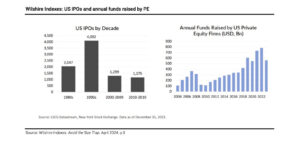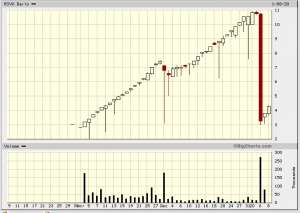One of the most misunderstood aspects of investing in microcap companies—and investing in general—is how a company should use its cash. While it’s often assumed that more cash is always better, as it suggests strong revenue and market fit, the real question is how effectively that cash is deployed. A company’s approach to cash management can reveal a lot about its management team and even signal whether investors should avoid the business entirely.
The High-Stakes Environment of Microcaps
The microcap space is unlike any other in the investment world. It thrives on high risk and is not the domain of large, stable companies. Instead, it’s where investors seek out high-potential opportunities that can deliver exceptional returns. This is the same space where Warren Buffett famously began his investing journey, purchasing undervalued microcaps, building positions, and guiding those companies toward success. Buffett has often highlighted that one of the key factors in this process is understanding how management handles its cash resources.
The Dangers of Low-Risk Thinking
Microcaps live and die based on their ability to identify an opportunity and achieve significant growth. Because of this, they attract investors who expect significant growth or nothing. These investors are not looking for a dependable 4% yield per year.
Along these lines, any cash that comes in after expenses should be put to work, either buying more resources, or positioning the company to reward investors. Which brings us to an issue we have seen repeatedly: microcap company management considering dividends. This often comes from the minds of well-meaning Executives and Board members, whose only experience in the markets is from a large bank more mature company.
microcap companies succeed or fail based on their ability to identify opportunities and achieve rapid growth. Find a new market opportunity or niche and capitalize and dominate that growing market. This environment attracts investors who are not interested in modest returns but are seeking significant growth potential. For these companies, any cash generated after expenses should be actively reinvested to fuel further growth or to enhance shareholder value. However, an issue that often arises is management’s inclination to consider dividends—an approach typically seen in large, established firms with a different risk profile.
While the idea of rewarding loyal shareholders with dividends might seem appealing, in the microcap space, it can be counterproductive, and quite frankly, unattractive to growth investors.
The Dividend Trap
Dividends are favored by wealthy investors looking to slowly grow their wealth while protecting their principal or for those that are looking for a slow and dependable income stream. However, for the average investor seeking to build wealth through microcaps, dividends can be a misuse of resources. The moment a microcap company announces a dividend, it often signals to the market that the company lacks better growth opportunities to reinvest in. This perception can drastically limit the expected returns for investors. Additionally, dividends can be subject to income taxes, making them a less efficient way to reward shareholders compared to capital gains.
Even worse than paying dividends is when management chooses to sit on a pile of cash, earning minimal interest and losing out to inflation instead of reinvesting in the business. Risk-averse management can be detrimental to a company’s growth prospects, and it’s not difficult to identify these companies with a quick glance at their financials and public statements.
Expanding the Business and Stock Buybacks
Rapid expansion, whether through asset purchases or other means, means the management has faith in the future growth of the company and sees considerable potential in its prospects.
All other investment signals being good—consistent and strong profit and revenue growth, modest debt levels, efficient and effective management, etc.—this is the kind of attitude you want to see in the microcap space.
Stock Buybacks
If expansion is not possible, another good option (if the company is undervalued) is to buy back stock. This is especially true in the current microcap environment, where there are a large number of undervalued companies with strong financials. Share buybacks provide a couple key benefits.
First, they allow a company to buy back its stock at a discount, which makes good business sense, with the option to cancel the shares or keep them. Second, they shake out the weaker shareholders, who are holding the stock back. Third, they reward shareholders with a small float and more value for each of their shares. And finally, they send a signal that management believes in the company and is committed to its value.
Warren Buffet used to work this angle, buying a significant position in undervalued microcaps and then convincing them to buy back stock. And some of the most successful companies we have seen in the last few years have done this.
Notable successes includes BeWhere Holdings (BEW.V), which recently bought back ten million shares, representing over 10% of its float. This action led to a significant increase in its stock price, from 20 to over 60 cents, exemplifying the power of a well-timed buyback. This is the perfect example of buying out the weakest shareholders, buying your own company cheap, and signalling to the market that the company is undervalued.

Another example is Atlas Engineered Products (AEP.V). The company initiated an aggressive buyback program in 2022, from 30 to 50 cents. Over the course of the buyback, the stock price doubled. And then two years later, the company refinanced at three times what the buyback was done at.

Enterprise Group (E) announced a buyback in 2022, representing 5% of its issued share capital. The company’s stock price has since surged, rewarding shareholders.

Cipher Pharmaceuticals (CPH) also announced a huge buyback in 2023 for 10% of the company’s shares, believing it was significantly undervalued, purchasing shares from $3.50 to $9. The stock now trades above $16.

Look for the Signs
In the current microcap climate, it’s worth keeping an eye on companies with buyback potential. These are typically profitable, growing businesses whose share prices don’t reflect their true value—often due to overly conservative management, with a misguided notion of what generates value. A well-executed buyback can serve as an insurance policy, enabling the company to buy its shares at a discount, shake out weak shareholders, and signal confidence to the market.
While some managers may argue that their stock is too illiquid for a buyback, the truth is the opposite: buybacks can improve liquidity by creating a market for shareholders looking to sell.
If you’re seeking dividends in the microcap space, you may be looking in the wrong place. While there are exceptions to the rule, these are rare and often come with their own set of risks.
The Take Away
Yes, cash is king—but only when used wisely. While it’s essential to have enough cash on hand for emergencies or unforeseen opportunities, sitting on too much cash can be reckless in the microcap space. There’s a fine line between being prudent and being overly conservative, and the microcap market is quick to punish the latter. Investors should look for companies that are putting their cash to work in ways that will drive growth and create value for loyal shareholders.



